|
ID |
Nickname |
Country / City |
Languages |
Taxonomies |
Comment |
Project / Group |
Map |
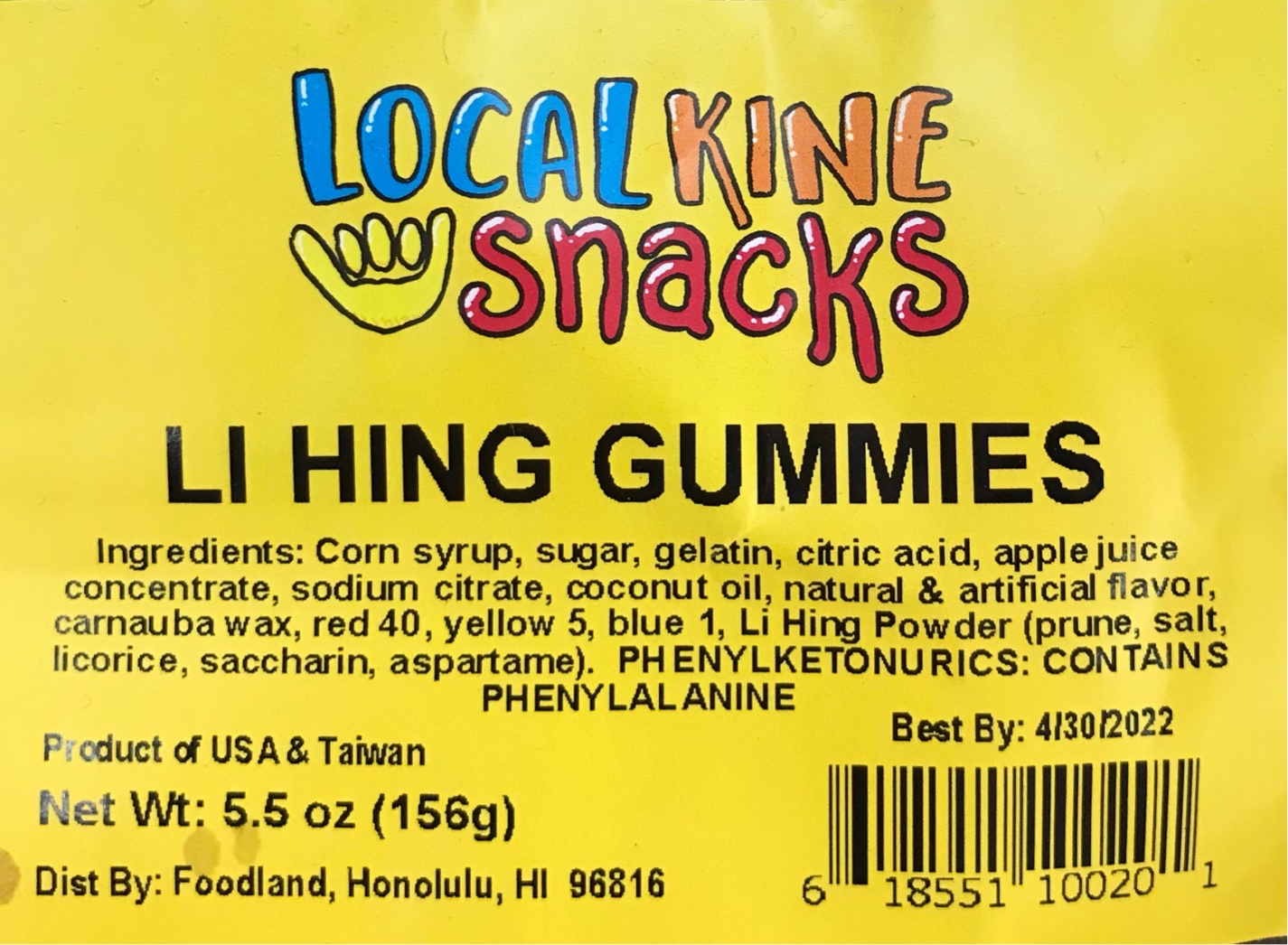
|
41358
|
|
United States
Kailua
|
|
|
Location: FOODLAND
|
Multilingual Hawaiʻi
|
|
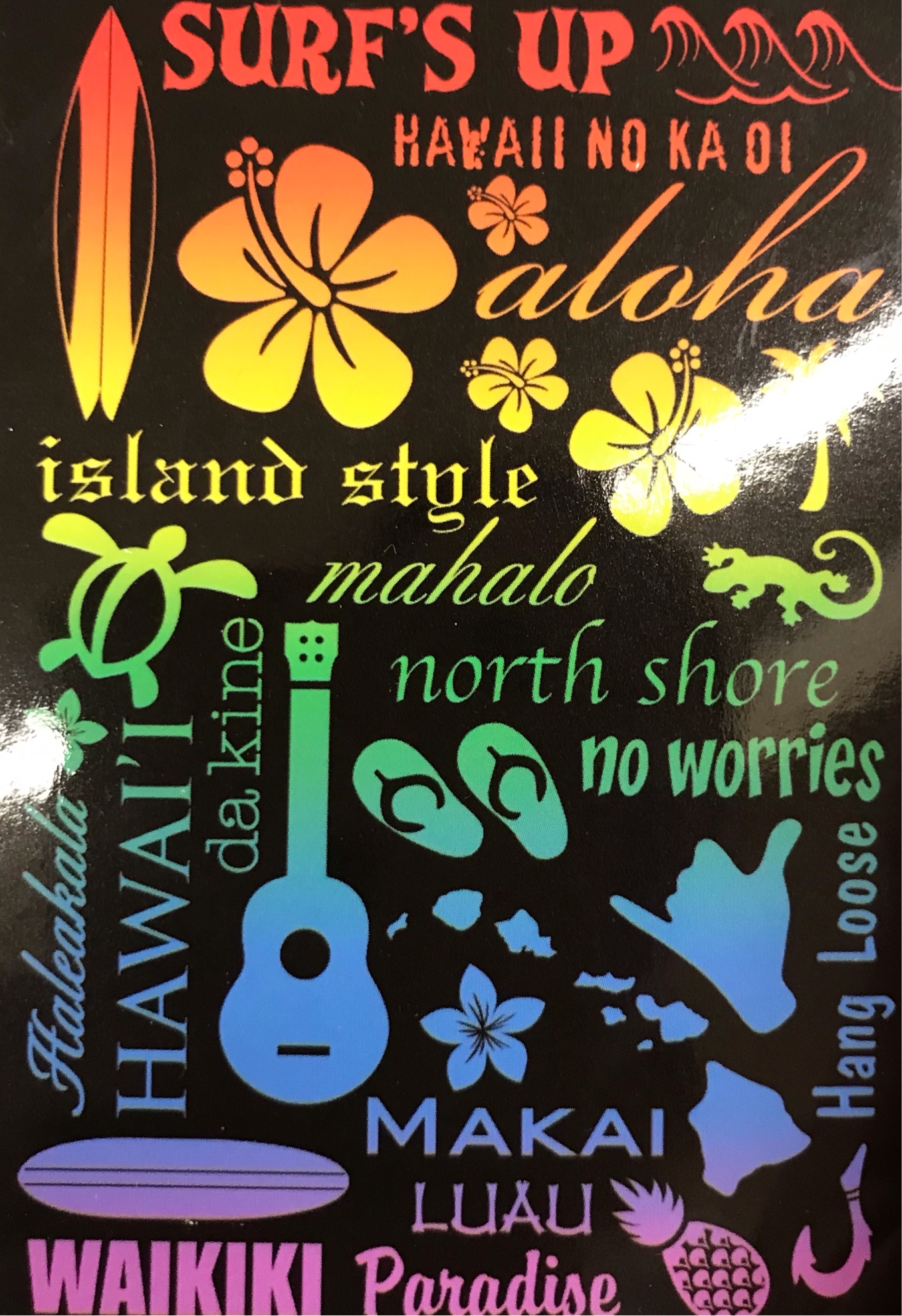
|
41359
|
|
United States
Kailua
|
|
|
Deck of cards cover at TIMES supermarket
|
Multilingual Hawaiʻi
|
|

|
41360
|
|
United States
Kailua
|
|
|
Children’s Book - Kimo’s Summer Vacation
|
Multilingual Hawaiʻi
|
|
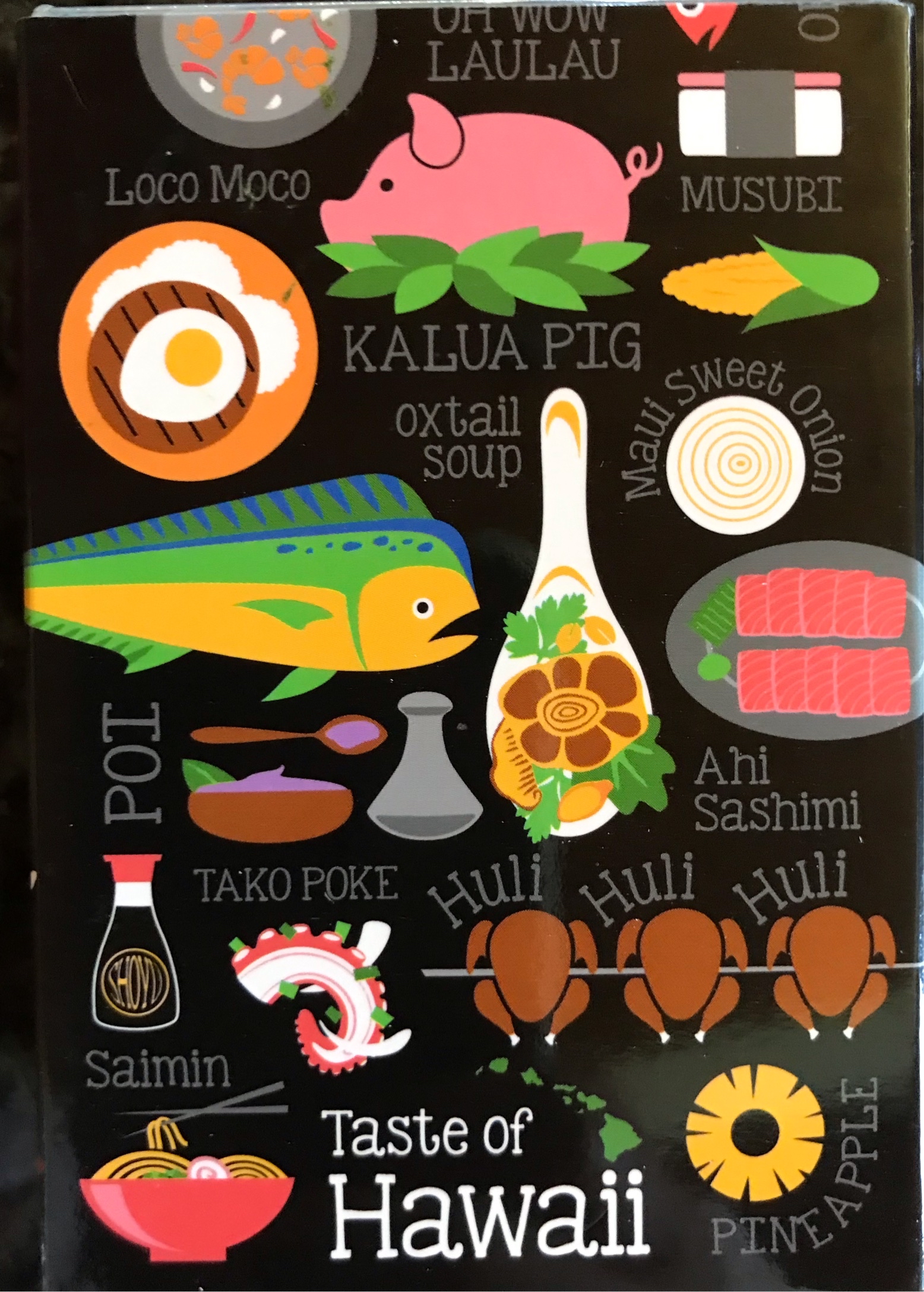
|
41361
|
|
United States
Kailua
|
|
|
Deck of cards cover at TIMES supermarket
|
Multilingual Hawaiʻi
|
|

|
41362
|
|
United States
Kailua
|
|
|
‘Shoots’ in Pidgin means ‘ok’ in English
|
Multilingual Hawaiʻi
|
|
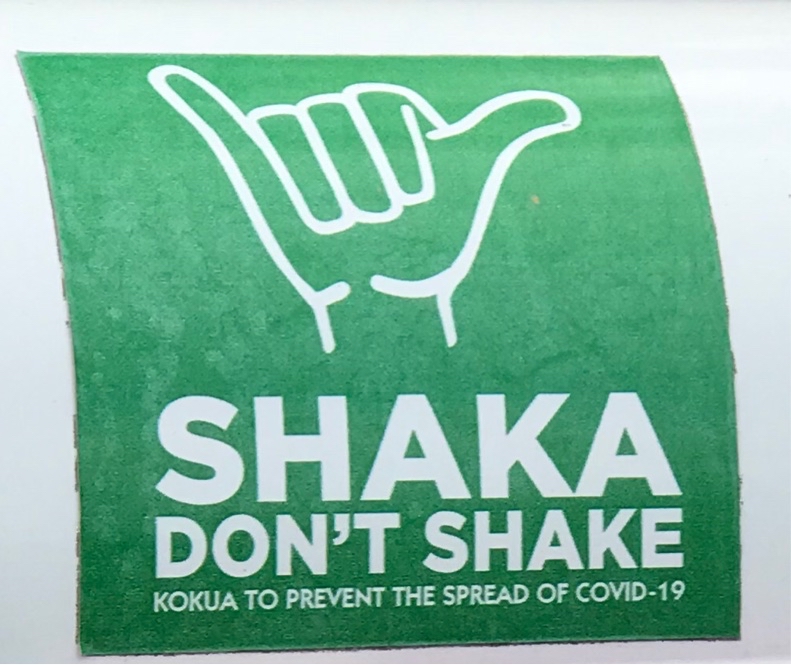
|
41363
|
|
United States
Kailua
|
|
|
—
|
Multilingual Hawaiʻi
|
|

|
47290
|
|
United States
Kailua
|
|
|
KA - Here the Hawaiian is kū kia'i mauna, which means to stand strong as guard of the mountain. in this case referring to Mauna Kea
|
Multilingual Hawaiʻi
|
|
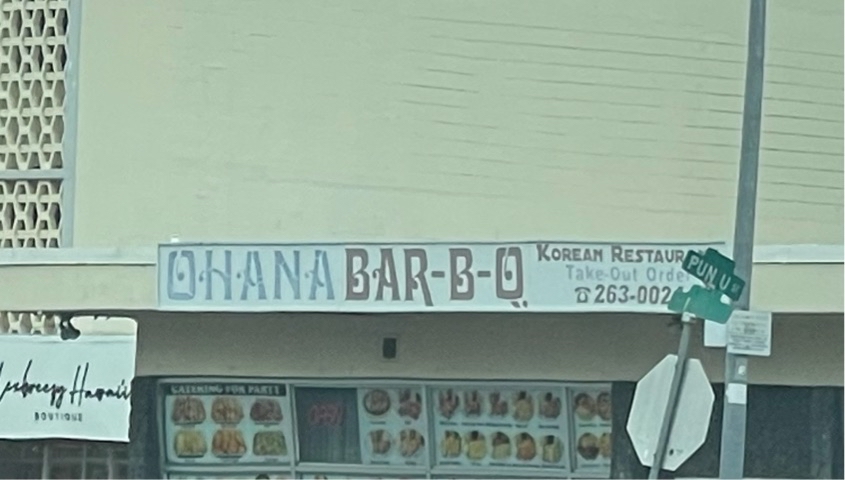
|
46039
|
|
United States
Kailua
|
|
|
SU: Check Up #2
- What languages are used on the sign?:
The languages that are used on the sign are Hawaiian & English.
- How are the languages presented?:
The Hawaiian word “Ohana” is presented in big, blue letters. The English words are presented in big and small, blue and red letters. The words “Ohana Bar-B-Q” are in big letter because that’s the name of the restaurant and the rest of the words are in a smaller font because it tells you what kind of restaurant this is and the phone number to call for a take out order.
- Who is the audience?:
The audience is the general public and could be for both locals and non-locals.
- What is the domain?:
The domain is a workplace and an eating place.
- What is the sign telling people?:
The sign is telling people that it is a Korean restaurant and since it says “Ohana Bar-B-Q”, “Ohana” means family so it might be a family owned Korean Bar-B-Q restaurant.
- Why is Hawaiian being used here?:
Hawaiian is being used here because it could easily catch the attention of the non-locals and locals alike.
|
Multilingual Hawaiʻi
|
|
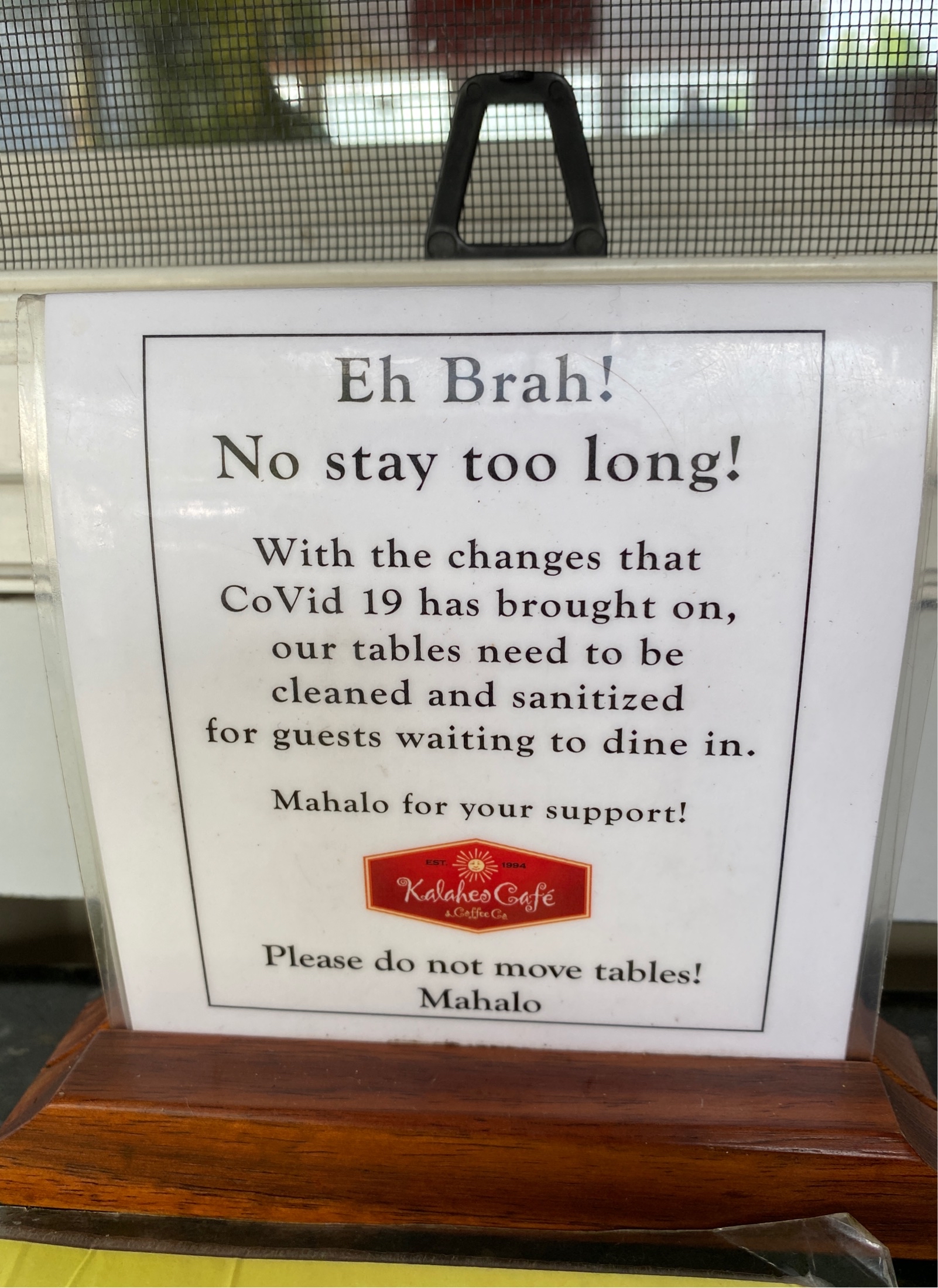
|
41175
|
|
United States
Kalaheo
|
|
|
“Eh brah! No stay too long!” Pidgin sign at all tables put in place asking patrons to be mindful of how long they spend due to the additional time it takes for staff to clean due to COVID19
|
Multilingual Hawaiʻi
|
|

|
38847
|
|
United States
Kalihi
|
|
|
—
|
Multilingual Hawaiʻi
|
|
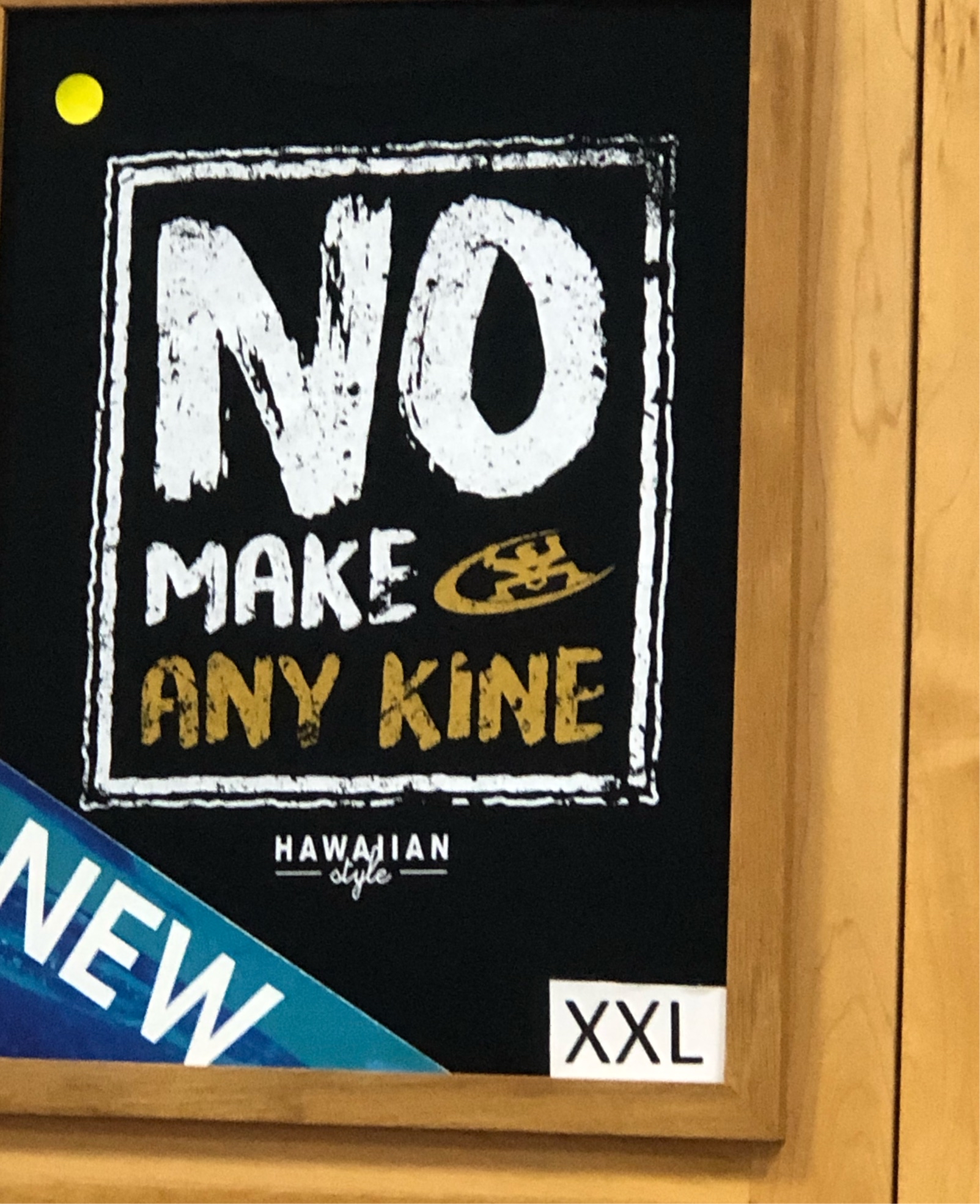
|
47122
|
|
United States
Kaneohe
|
|
|
SU: Check Up #3
- What languages are used on the sign?:
The languages that are used on the sign are Hawai’i Creole or Pidgin and English.
- How are the languages presented?:
The Pidgin and English are presented in big and bolded white and gold letters.
- Who is the audience?:
The audience is for the general public, but would probably be more directed to the locals.
- What is the domain?:
The domain is on an example card for a T-shirt in the T&C store at Windward mall.
- What is the sign telling people?:
The phrase “no make any kine” means don’t do things any type of way, have an intention behind whatever you’re doing.
- Why is Pidgin/Hawaiian being used here?:
Pidgin is being used here because it is an entertaining way to make a shirt and also because it is appropriate since we live on an island that consists of people who speak Pidgin.
|
Multilingual Hawaiʻi
|
|

|
47135
|
|
United States
Kaneohe
|
|
|
SU: Check Up #3
- What languages are used on the sign?:
The languages that are used on the sign are Hawai’i Creole or Pidgin and English.
- How is the language presented?:
The Pidgin is presented in skinny, yellow letters and the English is presented in smaller letters in a variety of colors that are placed in different areas of the photo.
- Who is the audience?:
The audience is the general public, but would probably be more directed towards locals.
- What is the domain?:
The domain is on an example card for a T-shirt in the T&C store at Windward Mall.
- What is the sign telling people?:
The phrase “kanak attack” is the feeling of intense laziness you get from eating too much. The plate shown in the photo of the Katsu chicken, Mac salad, 2 scoops of rice, meat with soy sauce and the Hawaiian Style drink is a very popular plate on the island and normally after eating this big of a meal people feel so tired and lethargic they they just want to knock out. Which is why the shirt says “Home of the kanak attack”.
- Why is Pidgin/Hawaiian being used here?:
Pidgin is being used here because it is an entertaining way to make a shirt. By wearing this shirt, it would show that you’re a proud local since Pidgin is like a signature in Hawai’i and so is the food shown.
|
Multilingual Hawaiʻi
|
|

|
47151
|
|
United States
Kaneohe
|
|
|
KA : Kakimochi is a local term for fried "kaki" rice balls "mochi". In Japan it's called Arare. Here, the choice to use the local term instead of the Japanese one is due to its familiarity to most locals. Kakimochi is classic and well loved. the domain is retail/sales.
|
Multilingual Hawaiʻi
|
|

|
47152
|
|
United States
Kaneohe
|
|
|
KA : Hapa is Hawaiian meaning half. Its use here is as a brand name, perhaps because the makers of the product are hapa perhaps because that's their name. Whatever the case, using a Hawaiian word for your brand makes it more appealing to locals who prefer to support local products. Domain is retail.
|
Multilingual Hawaiʻi
|
|

|
47153
|
|
United States
Kaneohe
|
|
|
KA : Meli means bee in Hawaiian. The choice to use meli instead of bee was probably to appeal to local buyers while still describing the product. Domain is retail.
|
Multilingual Hawaiʻi
|
|

|
47154
|
|
United States
Kaneohe
|
|
|
KA : Ku'ia is some kind of obstacle or to encounter an obstacles. As such I'm a little confused as to why one would use it as their brand name, I can only assume that it's their name. Despite all that though, the Hawaiian will still appeal to local customers. Domain is retail.
|
Multilingual Hawaiʻi
|
|
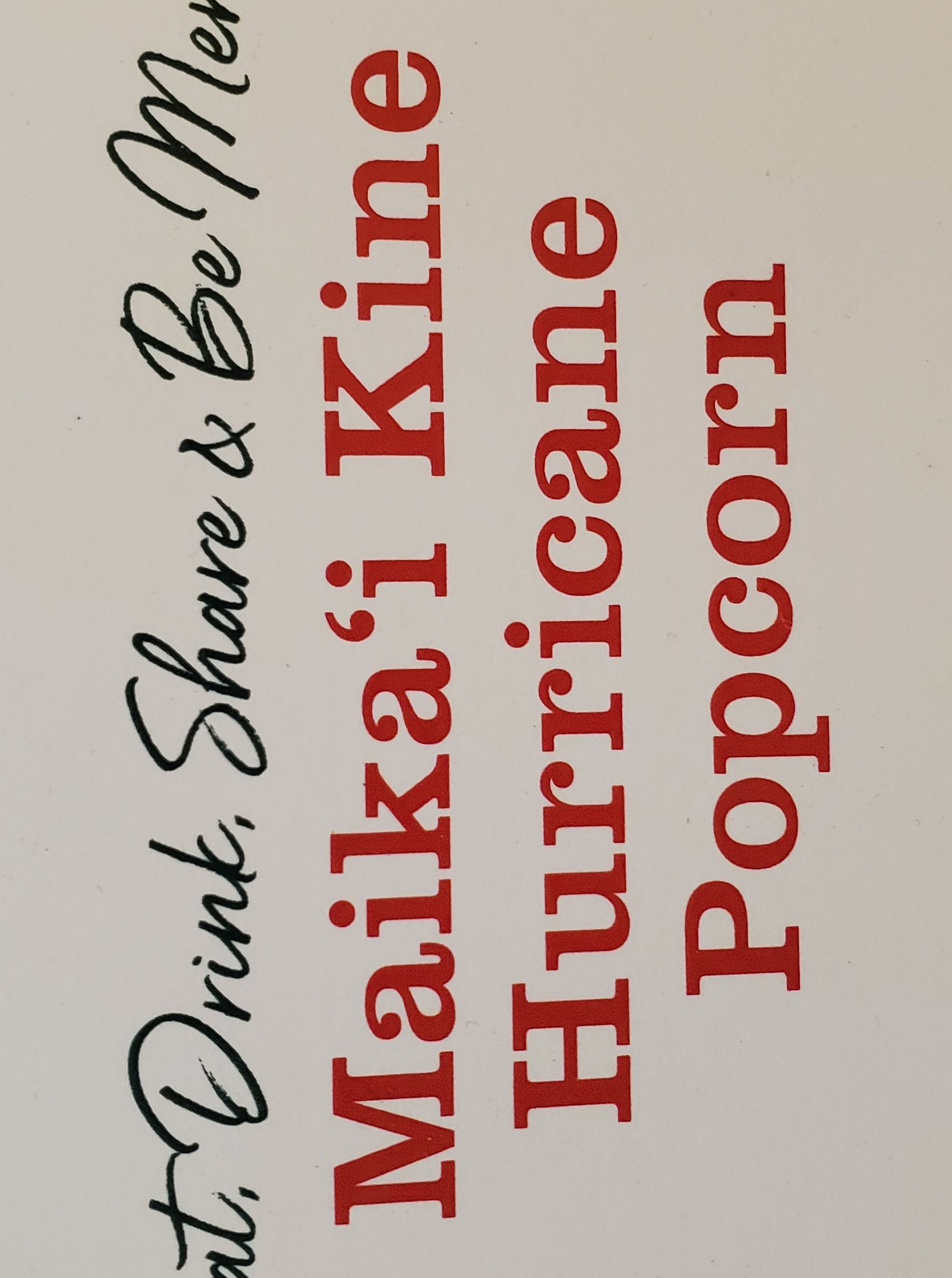
|
47155
|
|
United States
Kaneohe
|
|
|
KA : The pidgin here is "maika'i kine", meaning the good kind of popcorn. It i.plies to local buyers that this is a popcorn to be trusted because they're advertising in pidgin. Domain is retail.
|
Multilingual Hawaiʻi
|
|
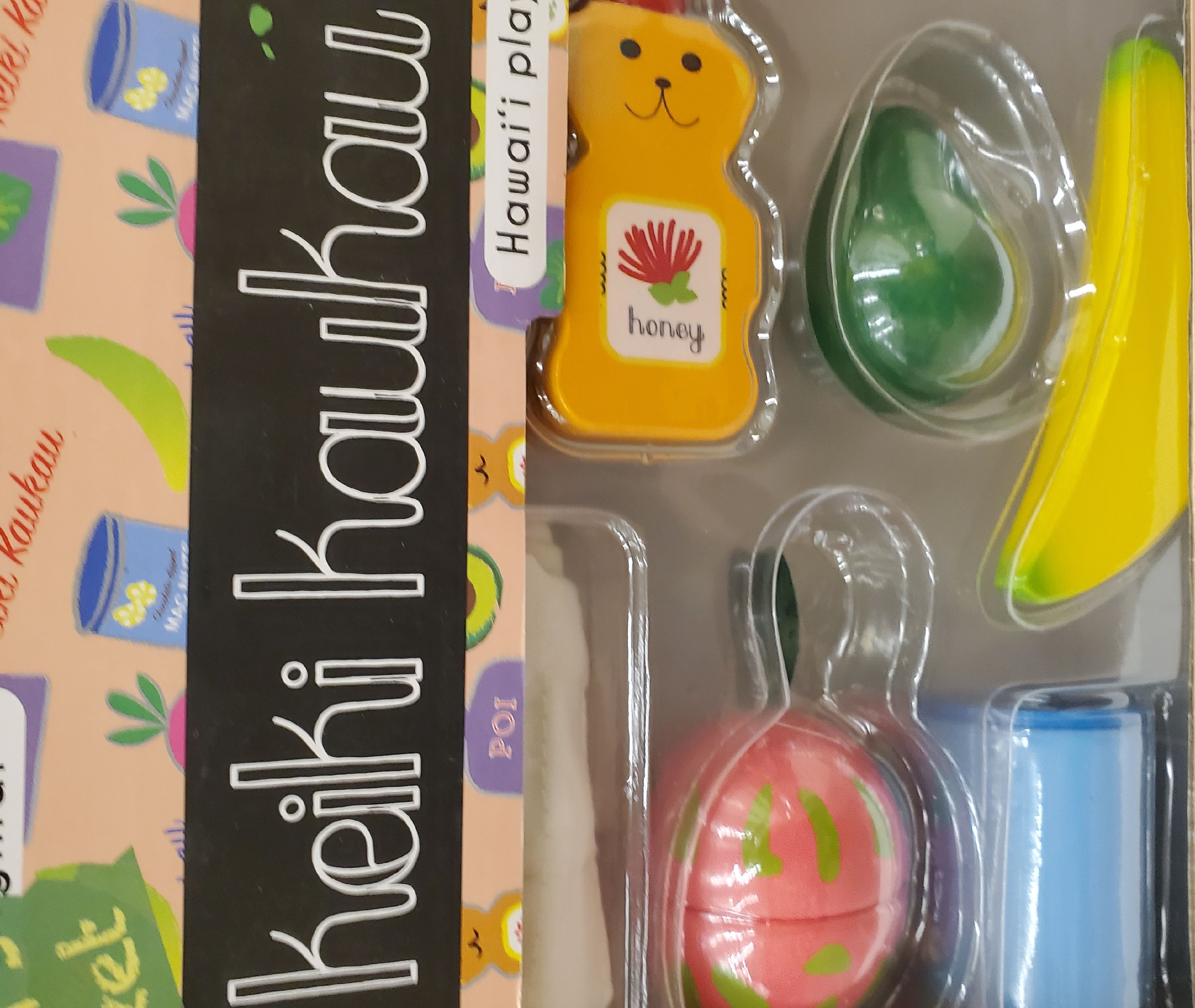
|
47156
|
|
United States
Kaneohe
|
|
|
KA : This could probably serve as either Hawaiian or pidgin, but I'm choosing pidgin. "keiki kaukau" means kid food. Which is what the box is full of, toys for children in the form of local foods. My guess is that someone thought it was adorable, because it is. Domain is retail.
|
Multilingual Hawaiʻi
|
|
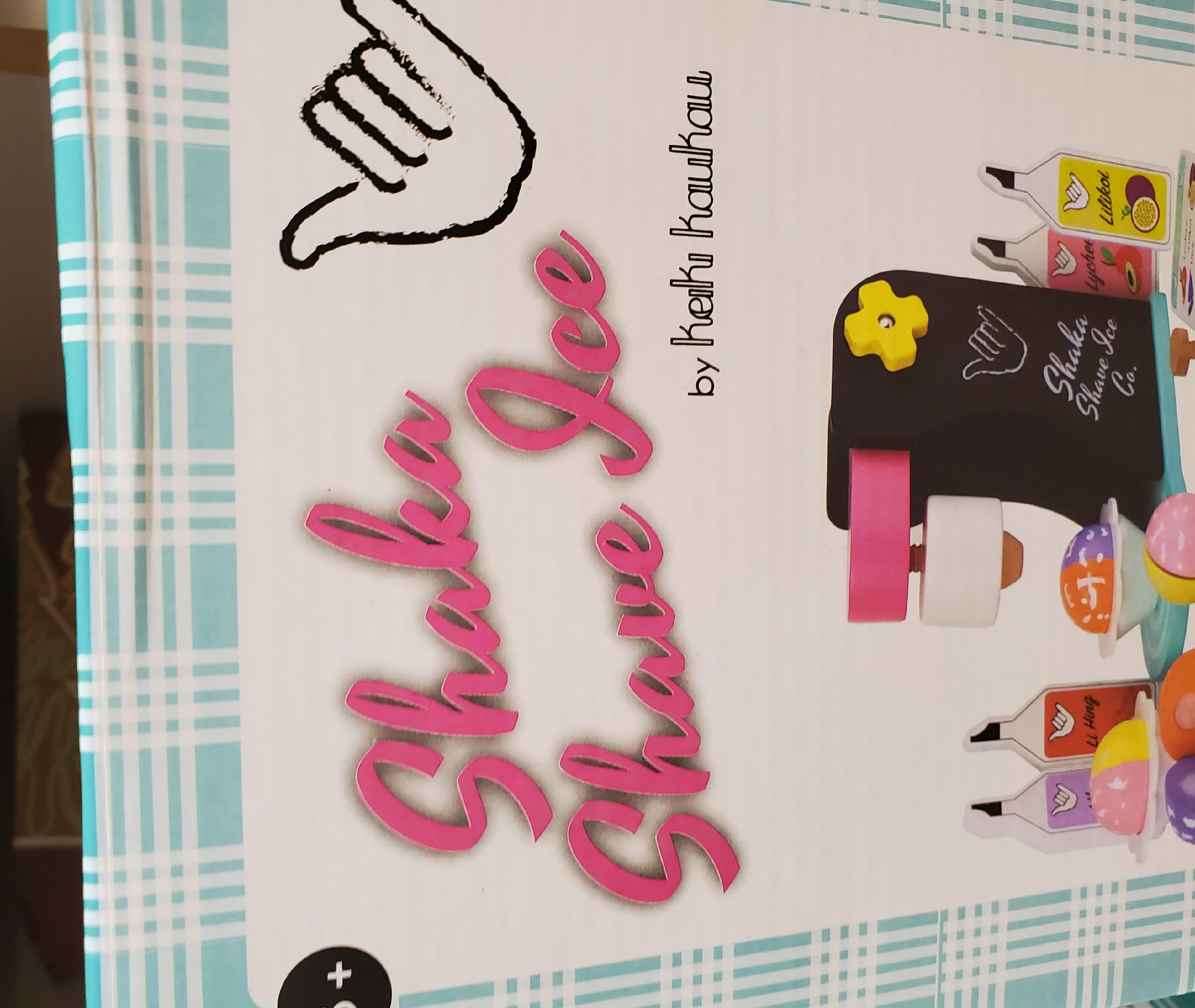
|
47157
|
|
United States
Kaneohe
|
|
|
KA : This is a dubious use of pidgin in my opinion. Usually Shaka Shaka is used ti appeal to tourists, not locals. But the product was in a local store. Nonetheless, tourists do love anything seemingly local but not too local and this fits the bill. Domain retail.
|
Multilingual Hawaiʻi
|
|

|
47158
|
|
United States
Kaneohe
|
|
|
KA : Mauna Loa is a mountain on the Big Island. It means "vast mountain" because of how big the mountain is. This is a classic brand who grow macadamia nuts there, they're obviously local and that's why people buy from them. Domain retail.
|
Multilingual Hawaiʻi
|
|